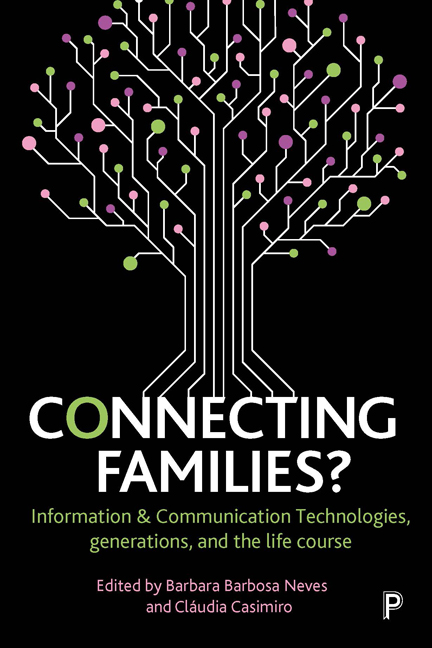Book contents
eight - From object to instrument: technologies as tools for family relations and family research
Published online by Cambridge University Press: 22 April 2022
Summary
Introduction
Over the past two decades, we have witnessed major revolutions in technology: broadband connections, mobile connectivity, and the rise of social media and social networking (Pew Research Center, 2014; Rainie and Wellman, 2012). These revolutions have spread and expanded rapidly, especially in Western societies, making the internet both faster and more accessible, and changing the way people develop their activities of daily living and create and maintain relationships across various levels: professional and personal (family, friends, and even strangers). In fact, ‘Humankind is now almost entirely connected, albeit with great levels of inequality in the bandwidth as well as in the efficiency and price of the service’ (Castells, 2013, p 132).
As recent North American and European data show, the usage of information and communication technologies (ICTs) such as the internet, mobile phones, tablets, and computers, constitutes a reality for millions of individuals and families, and their usage continues to grow. The percentage of EU-28 households with internet access reached 85% in 2016. In under a decade, from 2007 to 2016, this number rose by 30% (EUROSTAT, 2017) and today almost 50% ‘of the world's population is connected online and an estimated 8.4 billion connected things are in use worldwide’ (Rainie and Anderson, 2017, p 2).
With the increasing usage of electronic technologies, today seems to be the era of e-society, e-government, e-democracy, e-commerce, e-learning, e-health, e-participation, and of course also e-romance and e-dating. ICTs (gradually more accessible, affordable, and portable) and the lives of children, young people, and adults, have become inextricably intertwined (Carvalho et al, 2015, 2016).
In this new digital landscape, as Coyne et al (2012) maintain, the dependence that many individuals demonstrate regarding these technologies seems, at times, paradoxical:
In a recent survey (Popkin, 2011), for example, 3,000 British adults said the top five things they could not ‘live without’ were sunshine, the Internet, clean drinking water, refrigerators, and Facebook. Flushing toilets came in ninth. ‘Brits are obsessed by the weather, so it's not surprising sunshine was rated as the top thing we couldn't live without,’ said the pollster. ‘But to say you can't live without material things over drinking water is crazy.’ (Coyne et al, 2012, p 359)
- Type
- Chapter
- Information
- Connecting Families?Information and Communication Technologies, Generations, and the Life Course, pp. 133 - 156Publisher: Bristol University PressPrint publication year: 2018



